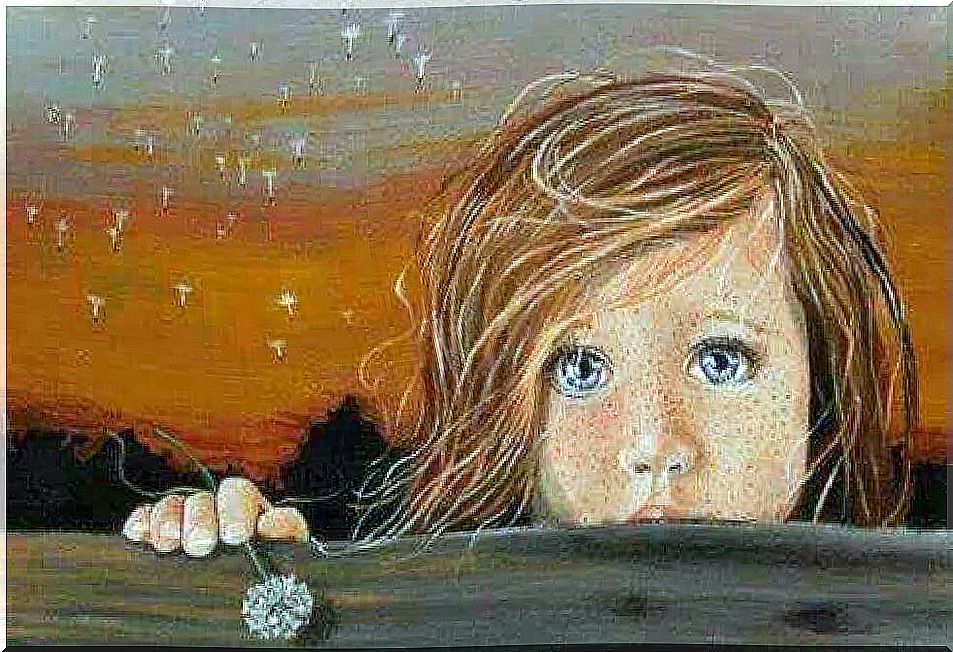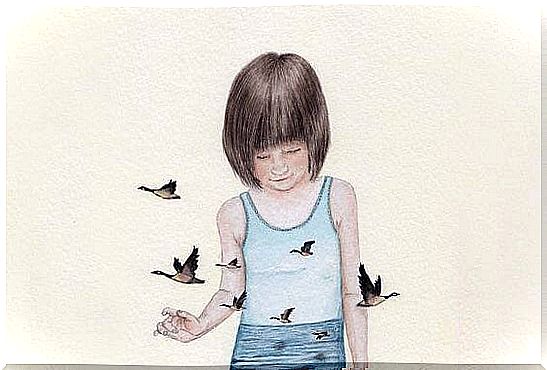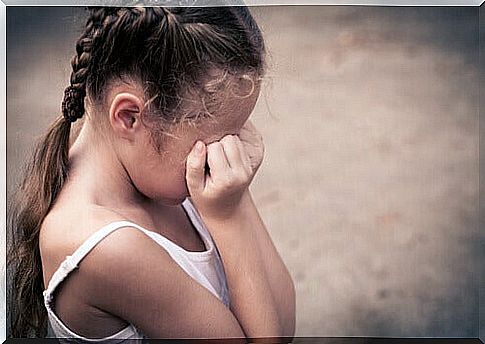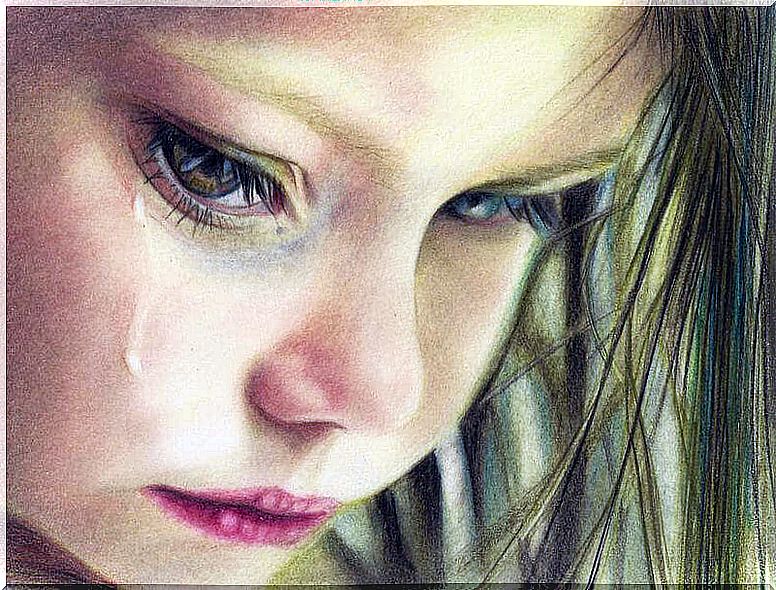Childhood Depression: A Child’s Tears Are Like Bullets That Hit The Heart

Childhood depression is little known, but it exists. Sad children who cry, who don’t smile, who are constantly bored and who don’t enjoy life. Children who live drowned in anguish. Children who see their innocence haunted by the terrible monster of depression.
Because the truth is, there are children lost in deep sadness. Children who cannot smile because reality has taken charge of putting the brakes on their innocence. It doesn’t feel real because our childhood image is that children are all smiling, happy, and playful.
The depressed child maintains an inner dialogue with himself that is rarely noticeable. Some of the questions that may arise for you are: How can I force myself to be okay? Why do people insist that I smile, play, don’t cry, and never bother me? Why can’t I help but feel like this, pissed off? Why is everyone looking at me weird? Am I different and not worth the effort?

Childhood depression, a depression with visible characteristics
Childhood depression exists and there are several signs that can help us to trigger the alarm that something is not right in the inner emotional life of our little ones. Some of its symptoms are similar to adults; for example, constant sadness or a drop in school performance (equivalent to low work performance in adults).
However, a distinct feature is that in childhood depression we tend to find more often aggressiveness and irritability or physical complaints such as stomach, headache, muscle pain, etc.
We can also observe how sadness alters motivation, the desire to play and to do different things. It can also be visible how the child does not eat or sleep properly or is the victim of a general lack of energy.
A child affected by childhood depression is likely to be unable to concentrate, think, or make decisions. Furthermore, thoughts of death or ideas, plans and suicide attempts may arise.
If there are 5 or more symptoms of those mentioned above, the specialist will probably diagnose childhood depression. However, it must be taken into account that certain states of apathy, unwillingness or sadness are perfectly normal.

In addition, we must respect a child’s sadness or apathy with caution, as if we insist that they be happy without understanding the source of their sadness, we are offering an erroneous educational standard. This means that we will be conveying to her that sadness, frustration or annoyance are not normal and therefore it is useless for her to feel them.
So let’s think about what it does to a child or an adult. Isn’t it normal to be sad about a loss? Is it not normal for all of us to have felt angry at some point in our lives? Are these emotional states not helpful for us to realize certain things?
It is also possible that we observe a certain motor agitation in a depressed child, which is called agitated depression. The child cannot remain seated calmly and the seat seems to burn him. She wriggles her hands, moves constantly, taps her fingers…

Looks like she has a pile that never runs out. This state should not be confused with hyperactivity. Therefore, it is always essential that the child is observed by professionals so that they can identify the symptoms and make the correct diagnosis.
The opposite of agitated depression can be seen in apathetic depression. Our little one thinks, speaks and moves in slow motion. You can’t talk to him and you have to constantly repeat the questions for him to understand. The subjects he talks about are little varied and he remains silent and still for a long time.
Another clue can be given from self-concept and low self-esteem. It may happen that the child believes that he is worthless and that he has a “factory defect”. She may even say to herself out loud that she is useless and extol her mistakes by making undue attributions about her strengths.

10 ideas to help a child feel good
Francisco Xavier Méndez, an excellent Spanish child-juvenile psychologist, offers us in his book “The child who does not smile” a decalogue of ideas to encourage smile and joy in children affected by constant sadness.
- Teach by example: smile, be in a good mood, enjoy your free time and vacation, think aloud sensibly, etc.
- Help your child to have fun and feel good: schedule enjoyable and fun activities, invite her friends to come to your house to play, surprise her with innovative and attractive plans, highlight her successes, consider her preferences.
- Avoid unnecessary suffering: take care of your child’s health (vaccination, hygiene, sleeping habits, food, etc.), prepare him for stressful situations (such as starting school or losing a family member).
- Promote family harmony: express affection through words and actions, encourage family communication, avoid arguments in her presence, etc.
- Educate her with affection and consistency: act in accordance with the environment, set reasonable standards of conduct and demand compliance, be understanding and flexible, collaborate with her school, etc.

- Leverage your child’s qualities, interests and hobbies: enroll them in a gym or club, awaken their interest in reading, music, cinema, theater, crafts, etc. Encourage her to try enriching things like new flavors, sports, games…
- Train her to tolerate frustration: don’t give in to her unreasonable demands, tantrums, teach her to respect her turn, gradually delay fulfilling urgent requests, progressively delay gratification, have her share toys and belongings her.
- Make her feel responsible, not guilty: value her effort in her study, not her grades or her awards. Set realistic goals and congratulate her when she achieves them ( Saying “congratulations on your “good”!” is better than “next time I want to see everything “great”! )
- Shape a rational thinking style: avoid absolutist labels and language (you’re bad, you never care about me); Instead of facilitating the solution, make the child think (what could we do to solve it…? And what else?). Talk to her, refute her irrational ideas and beliefs, etc.
- Strengthen her autonomy: Teach her basic skills like going to the bathroom, dressing, cooking, or managing money. Give her the opportunity to practice, help her with whatever is necessary, but don’t solve her problems, allow her to progressively participate in decision-making, etc.
However, if you continuously observe any of the above symptoms, it is important to consult a specialist to assess and work on the different aspects that are discussed to bring light to the fantastic smile that every child should have on their face and in their heart.









